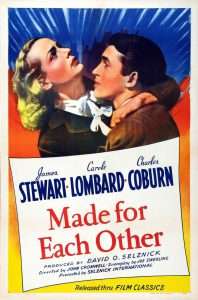The views expressed in this blog are those of the author and do not necessarily reflect the official policy or position of RCN or any other agency, organization, employer or company.
For over a hundred years some of the greatest video treasures of all time have been produced. Some have been lost in the sands of time and others, soon to be rediscovered, will become fan favorites for a whole new generation.
Each week we will feature just one of the many hidden gems that you can see on RCN TV with insights and commentaries on classic television shows and legendary cinematic performances.
Just try to get through the holiday season without hearing a Bing Crosby classic tune like “White Christmas” or seeing a clip from the holiday film with the same name featuring this legendary crooner (go on, I DOUBLE-dog dare you!)
Harry Lillis “Bing” Crosby became arguably the greatest entertainer of the 20th century, contributing to great successes in music, film and radio while producing television shows and even advancing technology in the recording and broadcasting industries.
After a somewhat reckless early venture in the music industry (his drinking and temper nearly ended his career before it really began), Crosby traveled the country singing in various groups. His great voice soon separated himself from working with a group to a solo act. It wasn’t long before his tremendous singing style garnished a record contract…and a number of hit singles would soon follow.
In addition to his singing skills, Bing was the first to utilize the newfound technology of a microphone–instead of singers having to belt out tunes to large theaters so everyone could hear, the new amplification techniques allowed him to sing softer and more melodically, which opened up a brand new avenue for singers.
After being denied early film roles because one producer thought his ears were too big, Crosby slowly became a major film star with hits like The Big Broadcast, Anything Goes, Pennies From Heaven, Holiday Inn and the “Road To…” film series.
Crosby attempted–and succeeded–in advancing his credibility as an actor in the 1940s by winning the Academy Award for his leading role in the film, “Going My Way.” (He also was nominated for best actor in another holiday classic, “Bells of St. Mary.”)
Crosby continued to bang out number one hits while creating a new style for singing, coining the name “The Crooner”–a nickname Crosby reportedly felt was insulting.
The tune “White Christmas” became so popular that the original disc containing the song broke from making so many copies. Crosby, along with all the same members of his backing chorus and orchestra, came back to re-record the song and to try to perform it exactly in the same style as before to recreate the recording. Although they used the same arrangement and musicians, there are actually slight differences in the recordings.
For example … to tell if it’s the first or second version, listen to the first few lines of the recording: “I’m dreaming of a White Christmas, just like the ones I used to know.”
Crosby did an unscripted trill in the opening verse for the word “dreaming” in the first rendition, but, in the second, did the trill for the word “know.” More often it’s the SECOND version of this song you will hear today on radio stations and on outlets like the “Music Choice: Sounds of the Season” channel (now available for RCN customers at dial position #1944).
The song held the record for the most sold records until Elton John’s 1997 tribute to Princess Diana with the reissue of “Candle in the Wind.”
But some of Crosby’s greatest contributions to the film, radio and television industries were yet to come, as he would revolutionize all of those mediums in a way that no one else had imagined before World War II. Details on that and more coming in next week’s Showplace blog entry.
In the meantime, you can see Crosby’s work in films like Road to Bali, his guest appearances on The Jack Benny Program and more classic shows on RCN TV.
To view the complete rundown of classic programming on RCN TV, check out the weekly listings here on our website.

